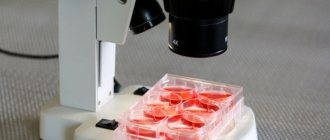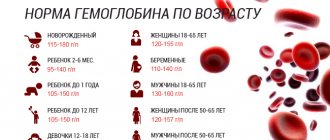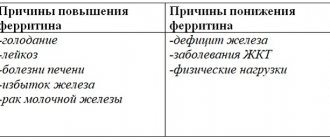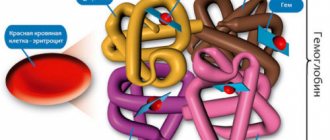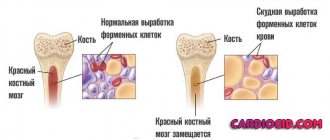When a blood test is performed, a person may be found to have elevated creatine phosphokinase (CPK), often referred to simply as creatine kinase. It will not be possible to find out immediately what the reasons may be. Most likely, the doctor will order additional tests. But still, some conclusions can be drawn after the first results arrive.
If creatine kinase in the blood is elevated, there may be several reasons, but at a minimum this may indicate damage to the heart muscle, which can subsequently lead to myocardial infarction. Other skeletal muscles may also be impaired or abnormalities such as hypertension or angina may be present.
KFC: what is it?
Creatine kinase is an enzyme that accelerates the transfer of a phosphoryl residue from adenosine triphosphate (ATP) to creatine. In this case, adenosine diphosphate is formed, and the energy that was previously hidden in the high-energy bonds of ATP is released and used. These complex biochemical processes provide the muscles with the energy they need to contract.
Since muscles contract almost continuously (heart function, intestinal motility, regulation of blood vessel lumens, swallowing, etc.), creatine kinase is continuously used by the body.
Creatine kinase, like other enzymes, is a protein and therefore composed of amino acids. Amino acids enter the body with protein foods, and then the necessary proteins or other amino acids are formed from them.
Loss of muscle mass or lack of dietary protein can affect the amount of creatine kinase in the blood.
Features of the analysis
CPK analysis - what is it and how is the procedure performed? To test blood for this parameter, the traditional method is used. It consists of the following: from a vein of the forearm (namely, from the upper third of the forearm), a specialist takes a certain amount of blood. After this, the collected blood is sent to the laboratory, where the study is carried out.
It is advisable for the patient not to eat before undergoing this test. So, the result will be more informative and accurate.
To determine the level of CPK, a blood test is performed using photometry. It consists of molecular absorption spectral research. The techniques included in this examination are based on the absorption of electromagnetic radiation, which occurs in a selective manner. Absorption is produced by the molecules of the component, the level of which is checked in the visible, infrared, and ultraviolet parts of the spectrum. CPK compounds with the reagent can also be absorbed.
For the study, a special apparatus is used - a KFK photocolorimeter.
Causes of increased creatine kinase
So what causes an increase in the concentration of creatine kinase in the blood? There are a great many such reasons, among them are dystrophies, burns, cancer, and simply intense physical activity. Well, most often the reasons are the following:
- Polymyositis (an autoimmune disease in which cells of the immune system begin to attack muscle tissue, causing damage to almost all muscles);
- Myocardial dystrophy (dystrophy of the heart muscle);
- Myocarditis (inflammation of the heart muscle);
- Oncological diseases (most often at the stage of tumor decay, which is usually accompanied by severe poisoning of the body);
- Convulsions, especially common during epilepsy;
- Overdose of certain drugs (statins, fibrates, amphotericin);
- Alcoholism, alcohol poisoning;
As for muscle overwork, an increase in creatine kinase is observed only in cases where the muscles begin to break down from overwork. This is accompanied by acute pain (sores) associated with the accumulation of metabolic products in muscle tissue.
It happens that creatine kinase also increases after surgery, and the more difficult the postoperative period is, the greater the likelihood of an increase in the concentration of this substance.
Interestingly, constantly elevated levels of creatine kinase can be observed in mentally ill people, namely those suffering from schizophrenia, manic-depressive psychosis , and those who abuse psychotropic drugs.
Winners of the final tournaments
| Year | Venue of the final tournament | Winning club | City | MRO |
| 1992 | Volzhsky | Metallurg-ISM | Volzhsky | Volga region |
| 1993 | Noginsk, Sergiev Posad | Motorist | Noginsk | Center B |
| 1994 | Mound | Torpedo | Mound | Ural |
| 1995 | Timashevsk | Emerald | Timashevsk | |
| 1996 | Ulyanovsk | Khimki | Khimki | Center (Moscow region A) |
| 1997 | Shuya, Kolobovo, Kokhma | Spartak-Telecom | Shuya | Golden ring |
| 1998 | Rostov-on-Don, Azov | SKA | Rostov-on-Don | |
| 1999 | Pskov | Pskov | Pskov | Northwest |
| 2000 | Kislovodsk, Min.Vody Zheleznovodsk, Pyatigorsk | Lokomotiv-Time | Mineral water | |
| 2001 | Krasnodar | Germancom | Krasnodar | Caucasus |
| 2002 | Kamyshin | textile worker | Kamyshin | Chernozemie |
| 2003 | Azov | Aruan | Nartkala | Southern Federal District |
| 2004 | Dagomys, Lazarevskoe | Vanguard | Lazarevskoe | Southern Federal District |
| 2005 | Novorossiysk | Novorossiysk | Novorossiysk | Southern Federal District |
| 2006 | Azov, Bataysk | Bataysk | Bataysk | Southern Federal District |
| 2007 | Dzerzhinsk | Chemist | Dzerzhinsk | Volga region |
| 2008 | Voronezh, Liski | Fakel-Stroy Art | Voronezh | Chernozemie |
| 2009 | Penza | Torpedo | Miass | Ural and Western Siberia |
| 2010 | Sochi | Podolia | Podolsky district | Moscow region |
| 2011/12 | ||||
| 2012/13 | Sochi | Miner | village Peshelan | Volga region |
| 2013 | Sochi | Vybor-Kurbatovo | Voronezh | Chernozemie |
| 2014 | Sochi | Metallurgist | Asha | Ural and Western Siberia |
| 2015 | Sochi | Lyubertsy | Lyubertsy | Moscow region |
| 2016 | Sochi | Star | Saint Petersburg | Northwest |
| 2017 | Sochi | Metallurgist | Asha | Ural and Western Siberia |
| 2018 | Sochi | Khimik-August | Vurnars | Volga region |
| 2019 | Sochi | Aksai | Aksai | Southern Federal District/North Federal District |
Note
.
In the 2011/12 season, the competition switched to the “autumn-spring” system.
In the 2012/13 season in the Far East, Volga Region, Golden Ring, Moscow, and Moscow Region zones, competitions were held only in 2012, which was due to the return of these zones to the old spring-autumn system. The final tournament took place in the fall of 2012.
Since the 2013 season, a return to the old “spring-autumn” system has occurred in all zones.
Reasons for the downgrade
Of course, in certain situations, creatinine kinase can drop sharply. This happens in the main period when a person’s muscle mass decreases. Any fluctuations in muscle mass can be a consequence of natural processes, as well as the results of various diseases. Typically, muscle mass decreases with age, a phenomenon called sarcopenia . A painful decrease in muscle mass is observed, for example, with prolonged fasting, lack of protein food, and infectious lesions of muscle tissue.
Also, a decrease in creatine kinase can be observed with alcoholic liver damage and liver cirrhosis. of ascorbic acid, aspirin, and amicocin also leads to similar results . Pregnant women also experience a slight decrease in the concentration of creatine kinase, which is quickly replenished after childbirth.
Neither an increase nor a decrease in creatine kinase is not a specific sign by which one can judge the presence of any disease in the body.
We see that there are a large number of diseases associated with fluctuations in the concentration of this enzyme, so before drawing conclusions about the patient’s health, additional examination should be carried out.
Indications and results
Indications for analysis are:
- early diagnosis of myocardial infarction (analysis is required within the next 2-4 hours);
- differential diagnosis of myocardial infarction, when this attack is combined with a mild or uncomplicated attack of angina.
In addition, this test is prescribed to all patients who are being treated for any heart disease in order to exclude the possibility of a heart attack. It is knowledge of the level of CPK (what it is, described above) that will help specialists determine the condition of the heart. An increase in this substance in the blood can signal possible heart problems. If this phenomenon is permanent, then the doctor in most cases decides on preventive treatment, which will stop the development of the disease in the future.
Blood CPK (what it is, you can find out at the beginning of the article) is elevated in the following cases:
- myocardial infarction (increased values are diagnosed in the first 2-4 hours, the maximum is reached after 24 hours; after 3-6 days the value decreases, but normalization does not occur);
- muscle dystrophy;
- Reye's syndrome (acute hepatic encephalopathy);
- state of shock;
- various poisonings, in particular with alcohol and sleeping pills;
- infectious lesions of the myocardium.
A reduced level of CPK in the blood (what it is, described above) is observed with a decrease in muscle mass, a sedentary lifestyle, and also acts as an indirect sign of the development of thyrotoxicosis (intoxication with thyroid hormones that are produced by the thyroid gland).
CPK levels in women
There are a number of features of the female body associated with the metabolism of creatine kinase. Firstly, due to the fact that women have less developed skeletal muscles, the concentration of this enzyme in their blood is noticeably lower than in men.
Secondly, the amount of creatine kinase may decrease slightly , while the amount of this enzyme in the placenta and placental blood, on the contrary, is higher than in the rest of the human bloodstream. This affects the amount of blood enzyme in a newborn baby, which is also higher.
Thirdly, the gene for congenital muscular dystrophy is often detected in young women. This is a rare genetic disease, the gene for which is located on the X chromosome, as well as the gene responsible for hemophilia. Just like hemophilia, muscular dystrophy most often affects boys. A woman who carries the gene has a 100% chance of having a son with the disease .
If a daughter is born and the father did not suffer from the disease, she, like the mother, will have only a slight deviation in the amount of creatine kinase.
Changes in the body during pregnancy
During pregnancy, the level of creatine kinase decreases slightly, which has virtually no effect on the mother’s well-being or her health in the future. This decrease is associated not only with bearing a child, but with the fact that the lifestyle of the expectant mother changes, or physical activity decreases significantly, especially in the later stages.
At the same time, the fetus's creatine kinase levels are elevated. For comparison: if an adult woman has 167 units of creatine kinase per liter in her blood, then a fetus in late pregnancy has 650 or more .
How to prepare for donating blood for CPK analysis?
To ensure that the results are not false positive, it is recommended to donate blood on an empty stomach. It is allowed to drink clean water without impurities. After eating, before donating blood, at least 8 hours should pass to determine the level of CPK (what it is is described in detail above), and the more, the better. If you use any medications, it is not recommended to take a test. This should be done before starting medication or two weeks after finishing it. If it is impossible to stop taking medications in any way, then the laboratory assistant needs to indicate all the drugs that are currently systematically taken by the patient, as well as their dosage.
Another important point that needs to be taken into account before donating blood is playing sports. Before the actual test, it is highly recommended not only to perform active physical exercise, but also to experience stressful situations and drink alcohol, even in small doses. In addition, do not rush to donate blood to determine CPK levels immediately after fluorography, x-ray examination (even if you took a picture of a tooth or finger), ultrasound procedure, various physiotherapeutic procedures or rectal examination.
Enzyme content in children
In children, the level of creatine kinase in the blood is very high, especially in the first days of life. So, for the first 5 days, the level of creatine kinase remains the same as that of the fetus before birth, that is, about 650 units per liter of blood. However, over the next 6 months, the amount of enzyme decreases by 2-2.5 times.
Until the age of one year, the amount of creatine kinase continues to fall; at the age of about one year it is about 200 units per liter. Then, due to the child's increasing activity, the amount of creatine kinase increases again. In time, this coincides with teaching a child to walk, run, manipulate objects, and so on.
But, if by the age of three the amount of creatine kinase reaches 220 units , then it begins to fall again, and by the age of six it is already 149 units.
From the age of 9-10 years, a child begins puberty, and the concentration of blood enzymes in girls and boys begins to differ.
The reasons for deviations from the norm in children are the same as in adults, with the exception, of course, of pregnancy. It should be borne in mind that children are more likely than adults to be overtired, and also often experience a lack of protein due to poor nutrition.
Table of norms of creatine kinase in the blood
CPK levels in the blood vary depending on age. The highest level of the indicator is determined in the child’s blood. This is due to the fact that children’s muscles grow intensively, and the brain works hard. In adults, the CPK value is lower. Creatine kinase in the blood of men is slightly higher than that of women.
The normal ratio of CPK isoenzymes in adults is:
- BB - 0;
- MV - 6;
- MM - 94.
That is, the brain isoenzyme should not normally be detected in the blood. The skeletal muscle isoform predominates over the cardiac isoform.
Normal creatine kinase values by age.
| Age | Content, units/l |
| Newborns up to 5 days | 652 |
| Up to 6 months | 259 |
| Up to 12 months | 203 |
| Up to 3 years | 228 |
| Up to 6 years | 149 |
| Boys under 12 years old | 247 |
| Girls under 12 years old | 159 |
| Boys under 17 years old | 270 |
| Girls under 17 years old | 123 |
| Adult men | 190 |
| Adult women | 167 |
What are the dangers of deviation from the norm?
Creatine kinase itself is not a toxic substance, so an excess does not pose any threat to the human body.
Serious threats to it are those diseases that caused an excess of this enzyme, for example, cancer, heart attacks, inflammatory processes in the muscles, various poisonings, and so on.
A lack of creatine kinase can affect the functioning of muscles and the nervous system . It causes muscle weakness, fatigue, dizziness, problems with attention and the ability to perform physical work.
Reviews from specialists and patients
Doctors describe the blood test for the CK MB enzyme as a very informative study. Previously, when a myocardial infarction was suspected, blood was taken from patients for CPK (creatine phosphate kinase). However, such a study showed the total content of all types of creatine kinase. And these substances are found not only in the myocardium, but also in the brain, as well as in the skeletal muscles. A high level of CPK did not always indicate myocardial infarction. According to doctors, only an analysis for a cardiac-specific enzyme (CF fraction) helps to accurately determine the presence of damage to the heart muscle.
In the video below you can see a doctor's opinion about the creatine kinase test.
Not all district hospitals and clinics have a test kit for testing for CV CM. Such diagnostic equipment is available only in cardiology departments. Therefore, it is better to hospitalize a patient with suspected myocardial infarction to a hospital specializing in the treatment of heart disease.
Patients also respond positively to the cardiac-specific enzyme blood test. This study helped them identify myocarditis at the initial stage, undergo treatment on time and avoid serious complications. After all, cardiac pathologies very quickly move into the decompensated stage. Carrying out a blood test for CV CK helps prevent irreversible changes in the heart muscle.
Preparing for the study
In order to find out what the concentration of creatine kinase is in your blood, you can go to a regular hospital. The concentration of creatine kinase is determined during a routine biochemical blood test. One day is enough to receive test results. Such an analysis costs about 370 rubles. To carry it out, blood is taken from a vein. Referrals for analysis can be obtained from a general practitioner, oncologist, cardiologist, and other specialists.
You should prepare for that crowd the same way as any other: the analysis is done in the morning on an empty stomach , 8 hours after the last meal. It is advisable not to smoke, drink, or take medications 3 days before the test. Since the amount of enzyme directly depends on physical activity, you should also not engage in sports or heavy physical labor.
In what tests is it detected?
The level of CPK is determined by a biochemical study of blood from a vein. Biomaterial is given in the morning, on an empty stomach. In order for the result to be reliable, it is necessary to prepare for the study:
- do not eat 8 hours before the test;
- give up cigarettes within 3 hours and alcohol within 72 hours;
- stop taking medications three days in advance, if this is not possible, inform the doctor about the medications in advance;
- reduce physical activity the day before.
The examination is prescribed to identify diseases of the heart and skeletal muscles. Based on the CPK indicator, the causes of chest pain are determined, a heart attack is determined, and conclusions are drawn about the probable degree of myocardial damage.
A biochemical test for CPK allows you to diagnose conditions such as:
- myocardial infarction - acute damage to the heart;
- dermatomyositis is a systemic disease of muscle and connective tissue;
- muscle dystrophy - a condition in which it weakens and loses the ability to work, and a person suffers due to progressive general weakness;
- autoimmune necrotizing myopathy - a neuromuscular pathology caused by improper functioning of the immune system;
- meningitis - infectious inflammation of the lining of the brain;
- diseases of the digestive organs;
- other.
Among other things, the CPK indicator allows one to evaluate the effectiveness of therapy for acute cardiac disorders.
